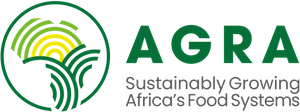In the aftermath of the financial and debt crises that started in 2007, food prices increased 57% in 2008 and 64 per cent in 2012, leading to a global food emergency in which 75 million more people went to bed hungry. The food crisis contributed to major protests and instability across the world, including in Mexico, Bangladesh and Burkina Faso. In the Middle East, it helped trigger the Arab Spring of 2012.
In March 2020, as shelves emptied in supermarkets across the world, there were concerns that a similar story might unfold. Many countries faced worker shortages: Italian farmers could not hire the 350,000 temporary workers they normally do for the spring planting season hit. And some countries restricted the export of strategic food commodities, like wheat in Russia and rice in Vietnam.
But despite these warning signs, food supply chains have so far broadly continued delivering food to populations in Europe, North America and most of Asia and South America. Global production is much higher than it was in 2008, with stock of cereals twice as high.
Not so in Africa
Yet the situation is different across much of Africa.
Food systems and the governance mechanisms that underpin them remain weak, and many countries also lack the social welfare mechanisms, institutions and strength of the private sector to mitigate the impact. The disruptions to supply chains caused by COVID-19 have shone a light on these vulnerabilities.
We can now see that there are four underlying factors which are driving a potential food crisis across Africa.
- First, African households affected by COVID-19 containment measures and the global economic downturn have less money to purchase food. Analysis by the International Food Policy Research Institute (IFPRI) shows that during Rwanda’s six-week lockdown between 21 March and 4 May, total GDP declined by 39% and poverty increased by 20 percentage points.
- Second, disrupted global supply chains have reduced Africa’s ability to import food – the continent imports a net $51bn per year. A significant proportion of this is transported as cargo on passenger planes. When air travel plunged following border restrictions, cargo capacity was greatly reduced and air freight rates surged 80 per cent between February and April.
- Third, local agricultural production has been disrupted. In Ethiopia, the government has projected that food production in the upcoming harvest season could decrease by 8%.
- Fourth, African logistics are struggling to adapt. Trucking capacity in West Africa declined 30% in April as borders closed and restrictions were imposed on drivers.
How to address these vulnerabilities?
To minimise the risk of increased political stability across the continent, or a humanitarian crisis that developed countries may come under pressure to finance, the key question that needs answering is what can be done differently to address these vulnerabilities and build the resilience of food systems to future shocks?
The key insight from agricultural development in developing countries in recent years is that in order to build resilience, the international community needs to change its approach. It cannot remain too narrowly focused on direct, short-term support to farmers. Rather, it has to support the development of local markets and of government systems.
To do this successfully, it is essential to fully back the agriculture transformation agenda of African governments. This means tailoring financial and technical assistance, as well as investment facilitation efforts that create business opportunities for other countries, to fully back agricultural value chains and markets that are prioritised by the host government.
Many governments have already identified value chains in which the country can actually compete in a globalised economy; and which have the potential to create large numbers of farm and non-farm jobs while spurring local innovation and entrepreneurship. Additionally, such support needs to go beyond working only within the sphere of farm production. It needs to extend to sectors such as rural infrastructure, agro-processing, access to finance, land, investment, agtech solutions and skills.
It is time for the international community to fully endorse and be responsive to the agricultural transformation agenda of African countries. This is the best way to meet both African and international community goals on food security. The alternative is to risk compounding Africa’s COVID-19 crisis with a new food crisis.
Originally published. Written by Jonathan Said – Leads the Inclusive Growth and Private-Sector Development Practice in the Governance team at the Tony Blair Institute for Global Change.






